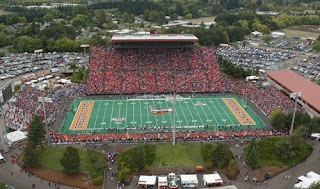First of all, hats o
 ff to the Swiss champion for retaining his throne as King of Grass for a fifth consecutive victory– one that will go down in history books, as he has tied the legendary Swede, Bjorn Borg and also achieved sporting immortality. However, his competitor and biggest rival, Nadal, was not eliminated with ease, to say the least. The second seed sent his opponent scrambling for returns, led the defending champ to a series of unforced errors, and even peeved Federer with a number of challenges (courtesy of the newly implemented Hawk-Eye technology) that turned out unfavorably for the world number one.
ff to the Swiss champion for retaining his throne as King of Grass for a fifth consecutive victory– one that will go down in history books, as he has tied the legendary Swede, Bjorn Borg and also achieved sporting immortality. However, his competitor and biggest rival, Nadal, was not eliminated with ease, to say the least. The second seed sent his opponent scrambling for returns, led the defending champ to a series of unforced errors, and even peeved Federer with a number of challenges (courtesy of the newly implemented Hawk-Eye technology) that turned out unfavorably for the world number one.Other than the fact that grass is Federer’s favorite surface, it was the demon-like serve of the Swiss that spelled the difference between the two competitors. With a remar
 kable twenty-four aces, compared to Nadal’s measly one, it is safe to say that these free points ultimately gave the top seed that extra edge. If the master of clay had served like he had in the quarterfinals against Tomas Berdych (with 6 aces and a 75 first serve percentage), Federer's tears probably would have been a result of dissapoinment, not relief. Although the twenty-one year old fell just short of ousting Federer and finally claiming his first Wimbledon title, it can no longer be said that Nadal cannot play on grass. Perhaps the underlying question is – who performed better, Federer in the 2007 French Open final or Nadal in the Wimbledon final? While both players emerged victorious in the surface of their preference, in my opinion - the Spaniard performed better overall.
kable twenty-four aces, compared to Nadal’s measly one, it is safe to say that these free points ultimately gave the top seed that extra edge. If the master of clay had served like he had in the quarterfinals against Tomas Berdych (with 6 aces and a 75 first serve percentage), Federer's tears probably would have been a result of dissapoinment, not relief. Although the twenty-one year old fell just short of ousting Federer and finally claiming his first Wimbledon title, it can no longer be said that Nadal cannot play on grass. Perhaps the underlying question is – who performed better, Federer in the 2007 French Open final or Nadal in the Wimbledon final? While both players emerged victorious in the surface of their preference, in my opinion - the Spaniard performed better overall.MATCH TIME
- The young Nadal won the 2007 French Open quite convincingly in four sets in 3 hours and 10 minutes
- Federer was pushed in a 3 hour and 45 minute five-set final at Wimbledon
UNFORCED ERRORS
- Federer lost on the French clay with an uncharacteristic 59 unforced errors, 32 more than Nadal
- Nadal finally succumbed to the clutched of his Swiss rival, but with only 24 unforced errors, even less than Federer's 34.
IMPROVEMENT
- Nadal appears to have improved more than Federer. In Wimbledon ’06 he lost in four sets, however, one year later he eventually succumbs to the top seed in a nail-biter final taking the Swiss champ to two breakers in five sets.
- Federer loses in four in both ’06 and ‘07, unable to even take Nadal to a single tie break set.
 ttle of the Surfaces, where Nadal finished triumphantly in a custom made court for the world’s top two players - one that is half grass and half clay (pictured to the right). The Roland Garros champ proved to be more masterful of the different turfs, winning the exhibition match in three sets.
ttle of the Surfaces, where Nadal finished triumphantly in a custom made court for the world’s top two players - one that is half grass and half clay (pictured to the right). The Roland Garros champ proved to be more masterful of the different turfs, winning the exhibition match in three sets.Through this year's Wimbeldon tournament, Nadal has established himself as an all-around tennis great. Even Federer would concur to this, as he admitted just after sealing the Spaniards fate in the grass final, that Nadal; “Because he came so close...I think he deserves a title here as well.” Lawn tennis might just see a new champion in '08.




















